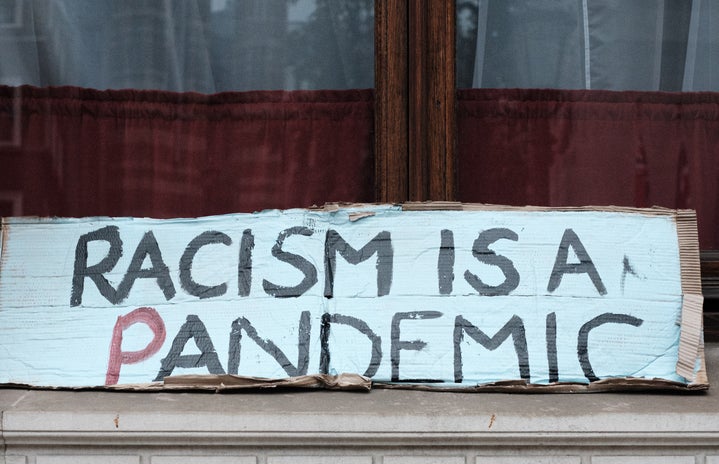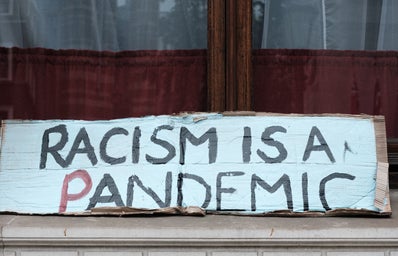It was 6 pm on a Sunday evening when I came across a peculiar video while scrolling through Instagram Reels. It showed a Caucasian woman boasting about achieving her dream of falling in love with a Korean man and having a mixed-race baby with him. This encounter left a bitter taste in my mouth, sticking with me long enough to coerce me into producing this article.
Fantasies revolving around people of a particular race are always concerning to me, and I hope to others too. They are often based on stereotypes or at ‘best,’ limited or distant experiences. A member of a race is reduced to predetermined standards and expected to trace the path decided by ‘others’. This behavior is highly prevalent towards East Asians. Their fetishization is a grave problem, and its intensity doesn’t seem to be fading anytime soon.
An inescapable force behind this pervasive phenomenon is definitely the Korean entertainment industry’s unprecedented success all over the globe. The most noticeable of the whole has to be K-pop. The genre carries a unique appeal — an assorted buffet of sounds, ubiquitous agreement over the music videos providing a visual galore, and intricate choreographies. It’s no surprise that its popularity soared; and with it, the size of the idols’ fanbases, bringing to the ambit people from different corners. Another attraction is Korean dramas, which are now being watched more than ever, thanks to the pandemic. Netflix India witnessed a 370% increase in K-drama viewership in 2020. It’s Okay to Not Be Okay and The King: Eternal Monarch are shows I have personally seen trending on Netflix as well as Twitter several times. However, this influx of admirers has been accompanied by that of increasing koreaboos as well. These people are obsessed with everything Korean – they intersperse their speech with random Korean words, make Korean friends specifically because they are Korean, wish to be Korean so as to be their idol crush’s type; and these are examples of things I have witnessed myself. A Reddit browse trip left me flabbergasted when I came across a user claiming to have seen an online video in which a girl was getting excited at seeing a Korean family at Target. Not to mention that some people wrongly assume all Koreans to look a specific way with glass skin, monolids, and straight hair – the recent beauty standards. Thus the ‘I wish I was Korean’ and ‘I wish I had a Korean boyfriend’ comments.
Japan is the creator of the very popular source of entertainment of Anime. Just look at the success of Attack on Titan and Demon Slayer. However, such a major effect of Anime has been categorizing Asians into tsundere, loli, yandere, etc., and cherry-picking of Japanese culture. With anime comes its pornographic buddy Hentai, which Gus Lubin in his Inverse article shows gets more searches in the US than the NFL in the middle of off-season. The big-breasted girls with servile attitudes are just fodder to the creepy obsession. So just like koreaboos, there exist their Japanese counterparts called weeaboos.
The western cinematic power of relentless archetyping since the beginning of time cannot be ignored in this conversation, and I find the two discussed by Joey Lee to be the most fascinating due to how opposite they are – the sensual and cold Dragon Lady, and the China Doll who is delicate and docile, interpreted as tools to acculturate ‘paranoid xenophobia’. These are white men’s fetishization techniques which are prevailing still. The Dragon Lady can be found as early as the 1930s in the majority of Anna May Wong’s roles; in the 21st century, it is Lucy Liu in her iconic roles in Charlie’s Angels and Kill Bill. Lee points out that these characters are ‘quickly brought to submission to ensure White dominance’. The other trope of China Doll can be witnessed in the Oscar-winning role of Miyoshi Umeki as Katsuki, a doting wife to her white husband in 1957’s Sayonara, while the contemporary example is that of Mantis from Guardians of the Galaxy. She is present to be dominated. Both archetypes submit to the colonial fantastical desires. The portrayal of geisha as just plotting prostitutes instead of the trained performing artists they are in Memoirs of a Geisha is just one example of the exoticization of Japanese culture by the West.
Fetishization is a tendency that has adverse effects on both parties, but obviously, the larger share falls on those who are being targeted. Being befriended only because of having similar looks to a Japanese actor or reducing the entirety of your culture to a genre of music like K-pop might not always be a pleasant feeling. Asian-American model Abe Kim made a Tiktok where he addressed such behavior: sitting in his white date’s Totoro-themed room, he wondered if maybe he was being fetishized; and by the look of the comments under his video, he wasn’t the only one to think this way. Nothing healthy can be founded on a harmful obsession. What is even more infuriating is that the things that Asians were previously made fun of for, are now being used as aesthetic because it’s a trend – this isn’t me saying that, but various Asian Reddit users. Moreover, author Maggie Chang says that fetishization increases not only racism but also sexism.
Therefore, there is a need to address this issue with, what I can say, sensitive severity. East Asians already constitute a section of the population whose problems are routinely overlooked; adding to them a disgusting one like this won’t help the recent drive against societal evils. Stereotyping, obsessing and exoticizing cultures and their people to serve our own tastes is a disease, and a cure can only come through us people itself.


